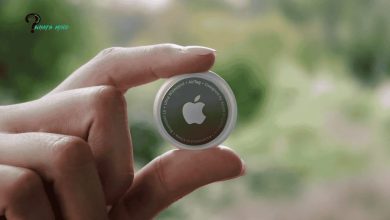What Is IgAnony And How to Use It?

An intriguing new show has swept the internet, and you may have heard about it. You know, the one that conceals your identity while you browse Instagram? IgAnony, the Instagram anonymous tale viewer, is just as fascinating as you’ve heard.
This fantastic online tool lets anyone view any Instagram profile without the owner’s knowledge or consent. It lets you see their personal information, including tales, pictures, videos, reels, etc. What’s even better?
Table of Contents
What is IgAnony
The IgAnony is an online video service that lets its users watch, save, and share videos. Their device is widely used to upload videos to the Instagram website. This platform could be utilized for various internet activities, such as video monitoring, communication, and entertainment.
Over the forecast period, demand for online video platforms is expected to grow exponentially due to the widespread usage of mobile and tablet devices and the ongoing digitalization trend.
It appreciate the hard work of the many experts who contributed to the success of this groundbreaking endeavor. You don’t need an Instagram account or any additional software to use our viewer. You only need an Instagram handle to view the profile, which may shock some. We’re happy to inform you that our IgAnony will be very user-friendly.
You only need to know the user’s username to monitor their profile. You can check out Instagram Stories in complete secrecy by using it. Viewing any Instagram account is a breeze because of Instagram’s compatibility with mobile devices. It is a web-based program that you can access from any computer, iOS or Android device, or any other device with an internet connection.
You’d love to read about Gramho
The IgAnony Method
Check out IgAnony.com.
Type in the Instagram user’s handle.
Select “View” from the menu.
Feel free to read their accounts in complete privacy.
That’s how simple it is! You may now secretly examine anyone’s Instagram profile.
Benefits
Many situations call for the use of it. Perhaps you want to maintain tabs on a friend or ex-lover without their knowledge, or you want to check what they’re up to without alerting them that you visited their page. For some reason, IgAnony is the best option for surfing Instagram without revealing your identity.
- You can look at anyone’s Instagram profile without them knowing it.
- You can browse the profile’s stories without following them.
- Very Convenient! Instagram Stories can be viewed in private.
- You can use it without disclosing any personal information or downloading any software.
- Zero Cost IgAnony.com’s iInstagram story viewer is accessible to everyone. No subscriptions are required or sought after.
- You can use our viewer without creating an Instagram account or downloading any additional software. To stalk someone on Instagram, all you need is their username.
- Retain Instagram Stories and download high-quality photographs and videos to save the memories on your device.
Is IgAnony Safe to Use
Ignorant use of it is acceptable. The website is secure and safe to use without downloading any software or revealing any personal information. It’s worth noting that while Instagram doesn’t expressly prohibit the usage of it, it is still deemed an invasion of privacy.
Also Read: YouTube to MP3 Converter — yt1
The Best 5 Substitutes for IgAnony
If it has been down for a while, you may check out your friends’ Instagram stories using this alternative.
Dumpor
Dumpor is an anonymous Instagram story viewer. Profiles, videos, Instagram stories, followers, and tagged posts are all available. Superior Instagram stalker/user.
Imginn
A quick and straightforward Instagram viewer and downloader, Imginn is free to use. It gives hope for the future. This simple-to-use Instagram downloader will get the highlights from your Instagram stories on your phone or computer. View Instagram stories without being identified.
Anyone who wishes to view Instagram Stories without creating an account or checking in will find Instalkr to be an invaluable tool.
Picuki
Picuki is a straightforward Instagram viewer and editor. Instagram is a social networking service that allows users to view and modify user profiles, stories, followers, posts, tags, and locations at no cost and for an endless amount of time.
SmiHub
If you’d like to keep your identity hidden while gaining insight into what’s happening behind the scenes of a target Instagram profile beyond just their stories, SmiHub is a valuable tool.
It’s easy to read Instagram stories.
The growing acceptance of anonymous storytellers has paved the way for numerous advances. IgAnony.com is the place to go if you want to read stories without giving out any personal information. While some are free, some may require a small payment to get the highest quality information available.
You may check out Instagram Stories, regular posts, and direct messages with this app. It’s a helpful tool that doesn’t cost anything yet can be easily accessed.
We have rigorously tested this website to verify that it is free of any issues. If you want to boost your chances of success on Instagram, check the spelling of the profile name and learn how Instagram story views work. You may find a method of viewing Instagram stories that do not reveal your actions to the story’s original poster.
Then you could benefit from using IgAnony, a story reader that lets you secretly view anyone’s Instagram story. That’s encouraging since it suggests you may have solved your problem.
Conclusion
Several Instagram-related subjects have been discussed here at IgAnony Review. You’ve learned that this is a great time-saving app. There are thousands of satisfied customers using this software, and you might be next. From what I can tell, this program is relatively user-friendly.




